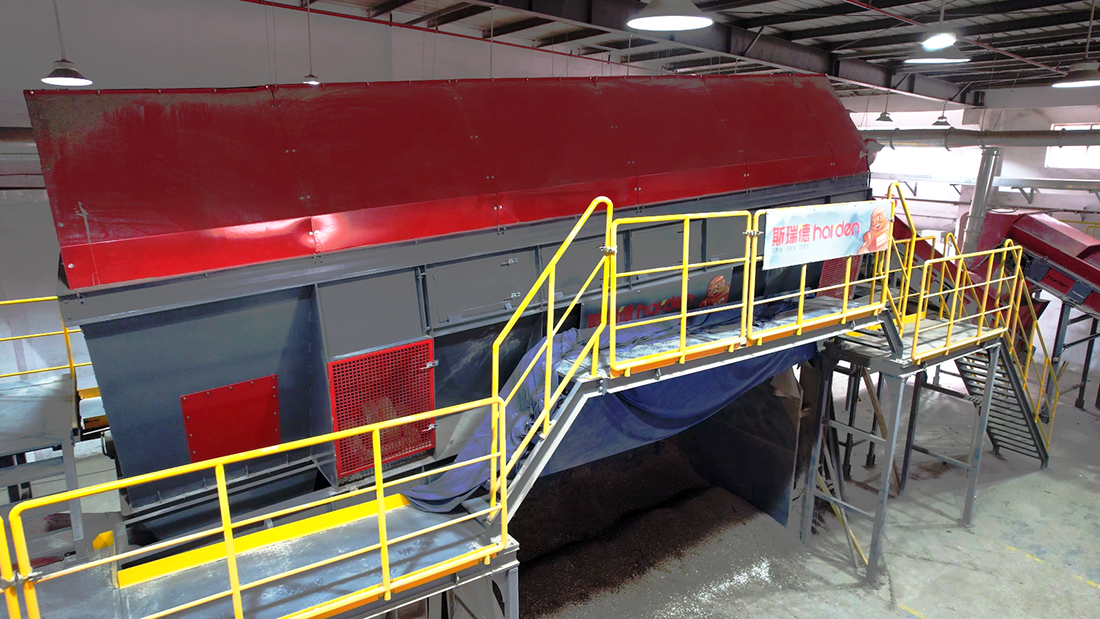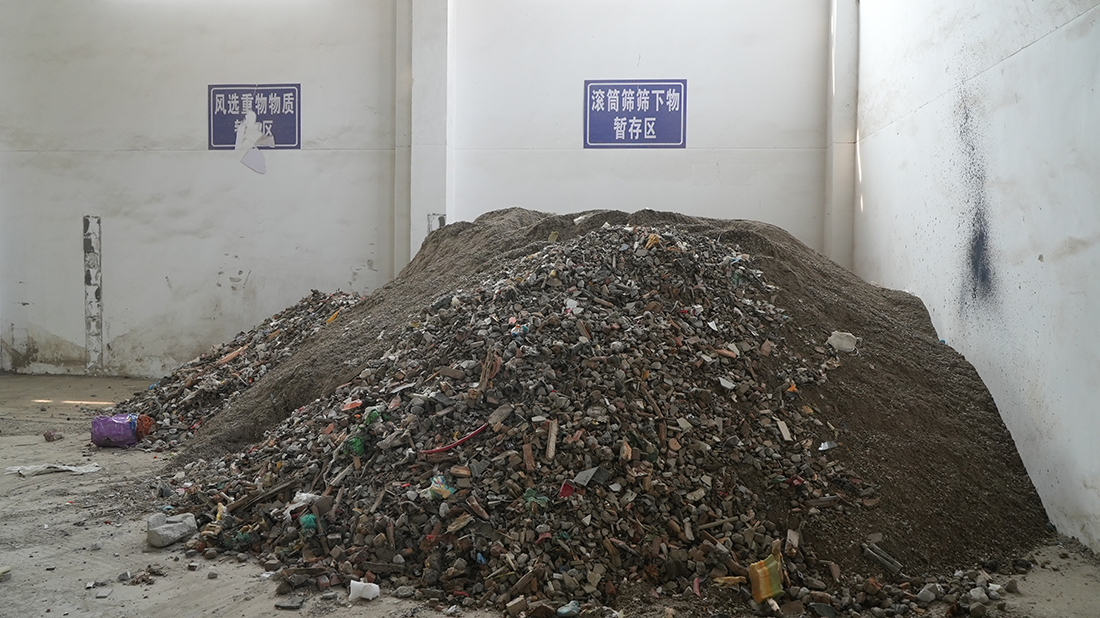Optimizing RDF Production with Advanced Sorting and Separation Technologies
High-quality Refuse-Derived Fuel (RDF) is produced from municipal solid waste, industrial solid waste, and similar materials through processes like shredding, sorting, and drying.
This creates a high-calorific-value fuel that can replace traditional fossil fuels in cement kilns, boilers, and other applications. At the heart of RDF production are advanced sorting and separation technologies—magnetic separators, windshifters (air classifiers), trommel screens, and disc screens—each playing an indispensable role in ensuring product quality and operational efficiency.
At Harden Machinery, we provide tailored solutions to optimize these processes. Let’s explore why these technologies are essential for RDF facilities.

Understanding the Basics: Why Sorting and Separation Are Critical
The value of RDF lies in its high energy content and low impurity levels. To meet stringent combustion standards for kilns and prevent equipment wear, corrosion, or safety risks, inert contaminants such as metals, glass, and stones must be removed from the feedstock.

Raw materials—such as mixed solid waste, household garbage, construction debris, or aged refuse—are highly heterogeneous, containing ferrous metals, soil, bricks, lightweight plastics, foams, and particles ranging from a few millimeters to several centimeters.
Without precise sorting and separation, these impurities compromise RDF's calorific value, ash content, and stability, potentially rendering the product substandard and disrupting production.

To tackle the dual challenges of impurity removal (via separation) and material grading (via screening), RDF plants rely on specialized equipment. Magnetic separators and windshifters handle separation by removing contaminants based on material properties, while trommel screens and disc screens perform screening to ensure uniform particle sizes. Together, these technologies safeguard RDF quality.
Key Technologies in RDF Production
1. Magnetic Separators: Extracting Metal Impurities for Equipment Protection
Primary Function: Removing ferromagnetic metals (e.g., nails, wires, rebar fragments, and sheet metal) from the feedstock.
RDF production often begins with coarse shredding, where metal contaminants can damage shredder blades, hammers, and other components, causing jams, downtime, or safety hazards like sparks from metal collisions.

Magnetic separators, such as permanent drum magnets or suspended overhead magnets, use powerful magnetic fields to isolate ferrous metals before or after initial shredding. This protects downstream equipment, extends its lifespan, and ensures RDF purity by minimizing ash formation and corrosion risks during combustion.

2. Windshifters (Air Classifiers): Enhancing Feedstock Energy Value
Primary Function: Separating lightweight materials (e.g., plastic films, paper scraps, weeds, and foams) from heavier fractions (e.g., organics, small metals, and soil).

Complex solid waste streams often contain heavy, low-density materials that perform poorly in combustion, disrupting shredding uniformity and pelletizing.
Windshifters (air classifiers) utilize aerodynamic principles: controlled airflow carries lightweight materials to a collection area, while heavier fractions fall due to gravity. This separation process significantly enhances the thermal stability and energy value of the final RDF product.
3. Trommel Screens: Sorting by Particle Size for Material Uniformity
Primary Function: Grading materials by size to remove oversized or undersized impurities, ensuring consistency for downstream processes.
After shredding and separation, material particle sizes can still vary widely—from large chunks (e.g., incompletely shredded wood or bricks) to fine dust and soil. Feeding such inconsistent material into drying or pelletizing stages can lead to uneven drying, poor pellet cohesion, or reduced RDF purity due to excessive fines.
Trommel screens, available in single- or multi-layer designs with customizable mesh apertures, feature an inclined rotating drum with perforated walls.

As material enters, rotation allows particles within the target size range (e.g., 10-30 mm, tailored to RDF pelletizing needs) to pass through the mesh into the next stage.
Oversized lumps exit the drum end for re-shredding, while fines drop through lower layers, preventing contamination of subsequent processes.
4. Disc Screens: Precision Screening for Challenging Materials
Primary Function: Efficiently screening sticky or entangling materials (e.g., wet waste, plastic fragments, fibers, or scrap tires), overcoming limitations of traditional screens.
In RDF feedstocks like household waste or plastics, high adhesiveness can clog traditional screens, reducing efficiency and requiring frequent manual cleaning, which increases labor costs. Disc screens address this challenge.

Comprising parallel rotating discs with adjustable gaps, they propel sticky or fibrous materials forward while allowing suitably sized particles to fall through the interstices. The disc motion also breaks up clumps, preventing aggregation.

Compared to trommels, disc screens resist clogging, offer higher throughput for varied sizes, and are ideal for high-moisture, viscous feedstocks. They are also widely used for Tire-Derived Fuel (TDF) screening in complex facilities.
The Combined Impact: Delivering High-Quality RDF
From magnetic separators and windshifters removing contaminants based on material properties to trommel screens and disc screens ensuring uniform particle sizes, these technologies work in tandem to deliver RDF with high calorific value, low impurities, and consistent performance.
Their collective role not only protects equipment and reduces energy consumption but also maximizes the resource recovery potential of solid waste, aligning with sustainable development goals.
The Future of RDF Production
As the RDF industry evolves, sorting and separation technologies are advancing with innovations like intelligent airflow controls, automated mesh cleaning, and integrated systems. These advancements enable RDF plants to achieve greater efficiency and precision.
For RDF facilities, selecting the right combination of separation and screening equipment is not just standard practice—it’s a strategic investment in product competitiveness and operational sustainability.

At Harden Machinery, we specialize in cutting-edge sorting and separation solutions tailored for RDF production. Our magnetic separators, windshifters (air classifiers), trommel screens, and disc screens are designed to optimize efficiency and deliver superior RDF quality. Visit our website for more insights and customized consultations to elevate your RDF facility's performance.


